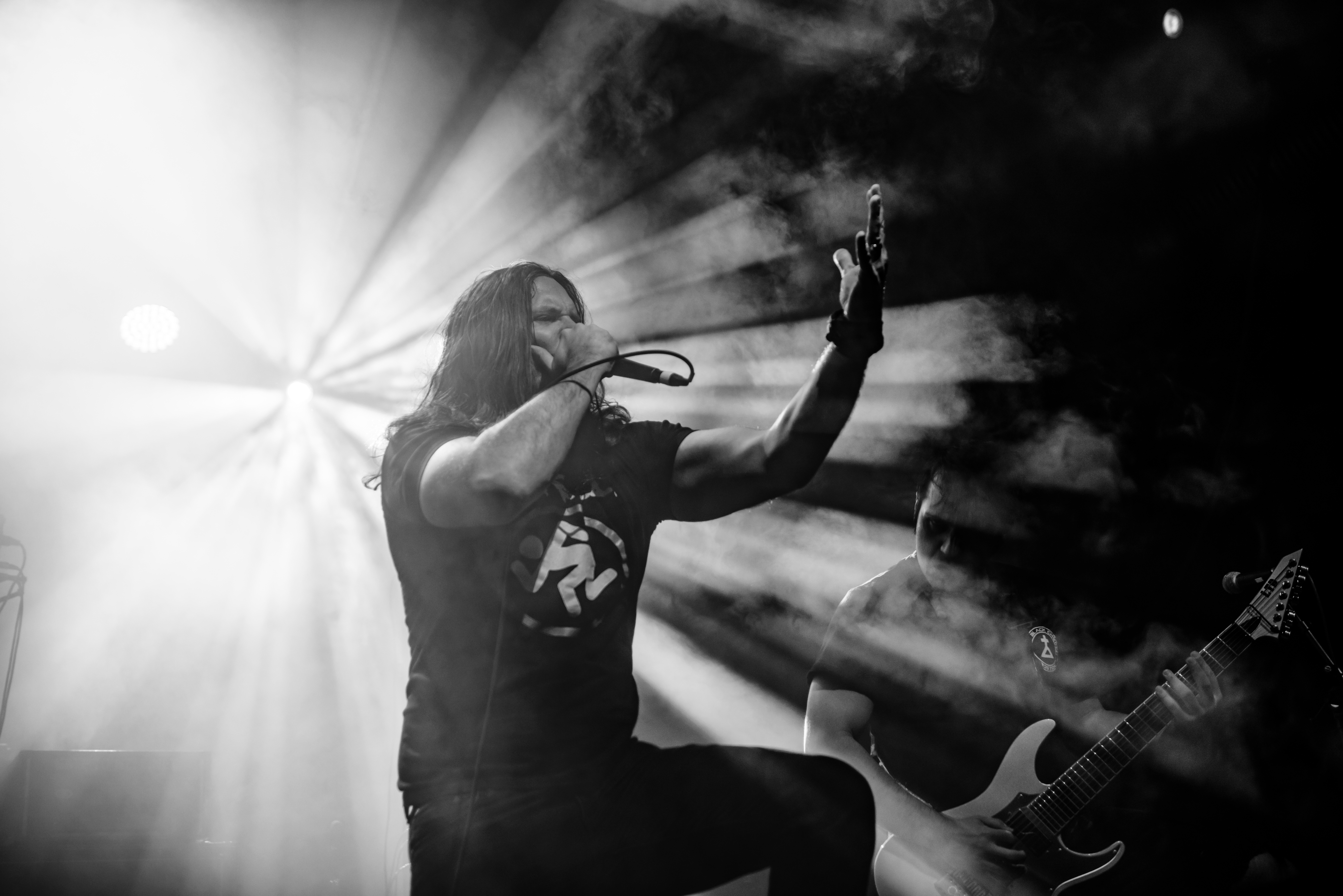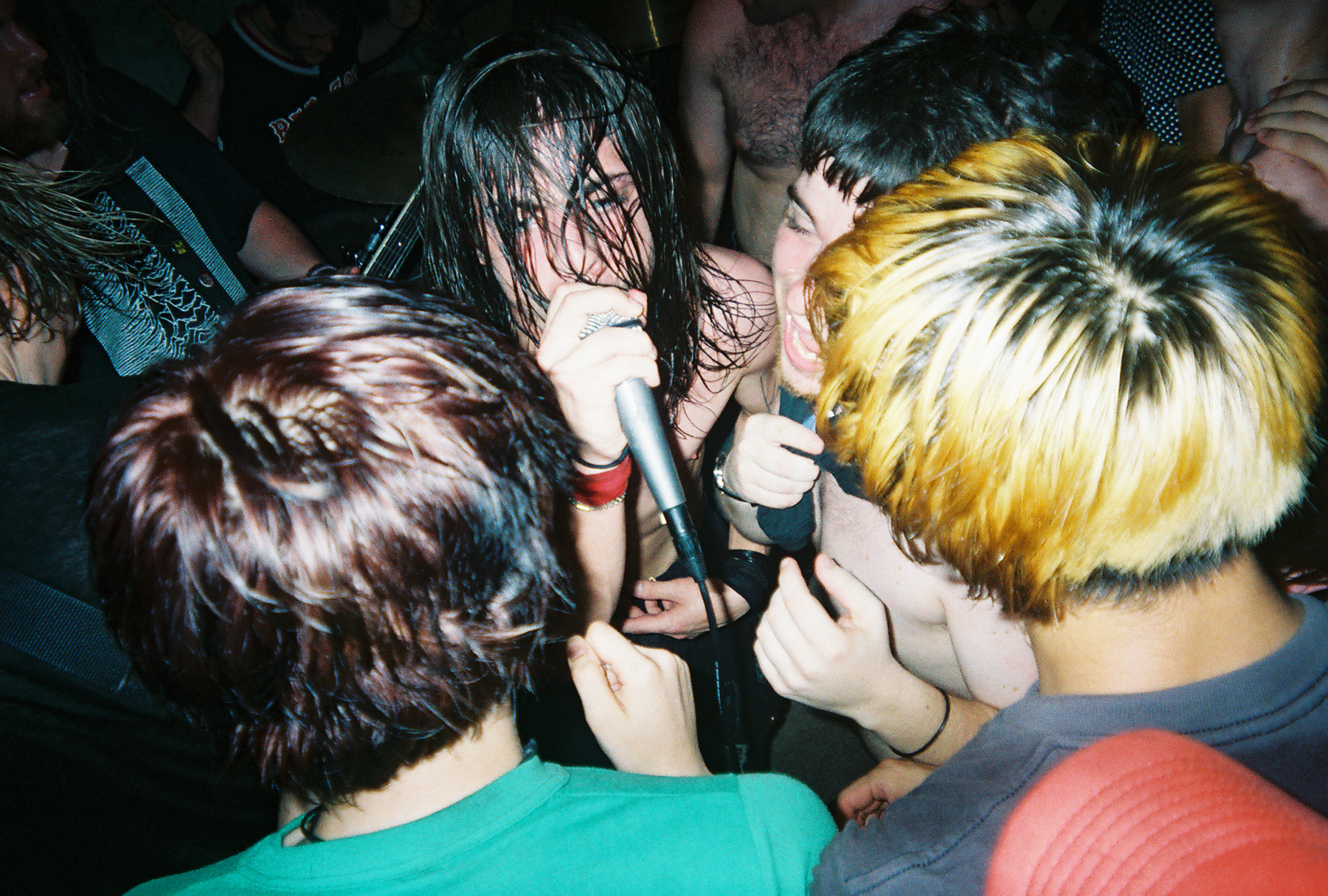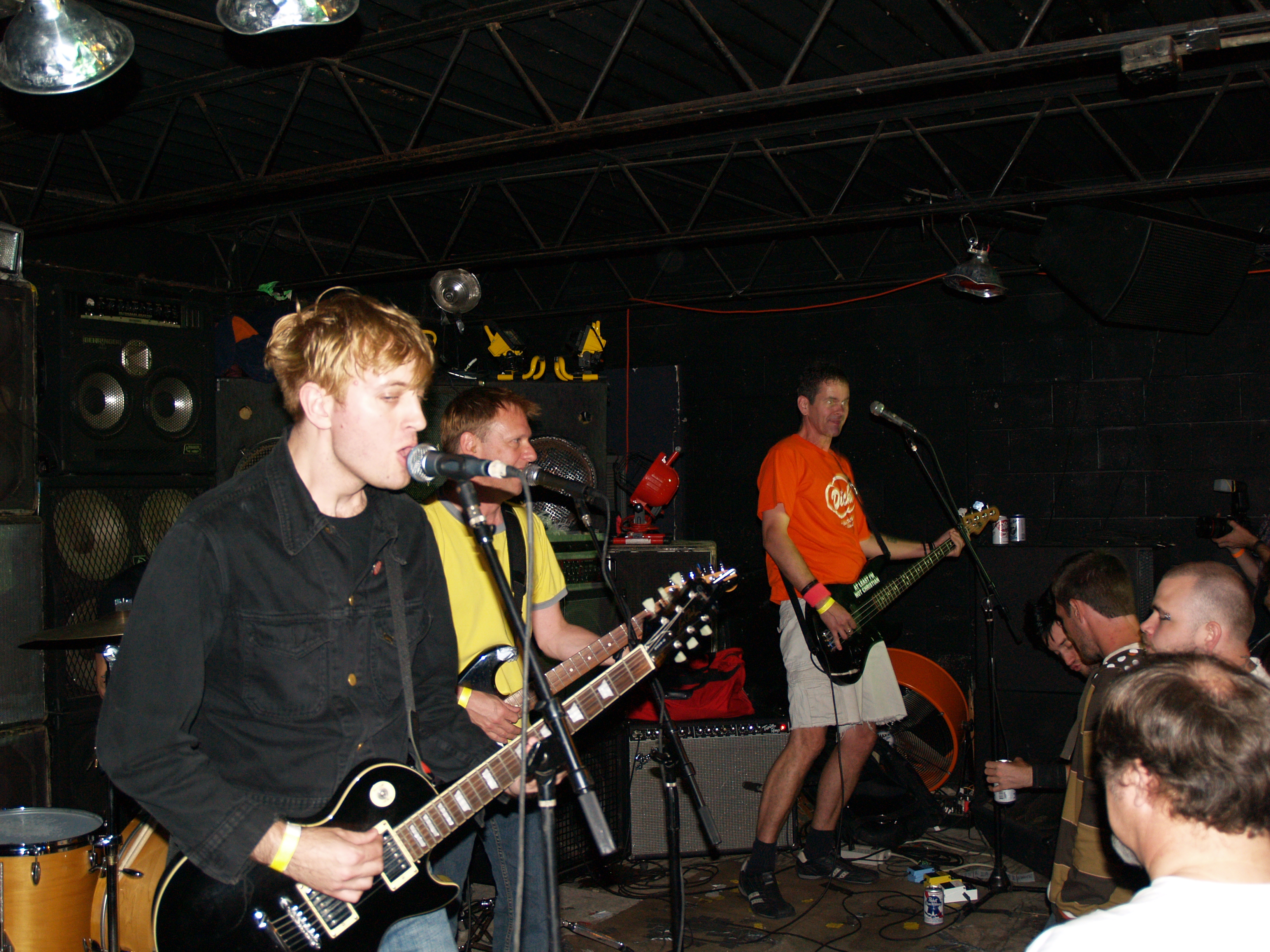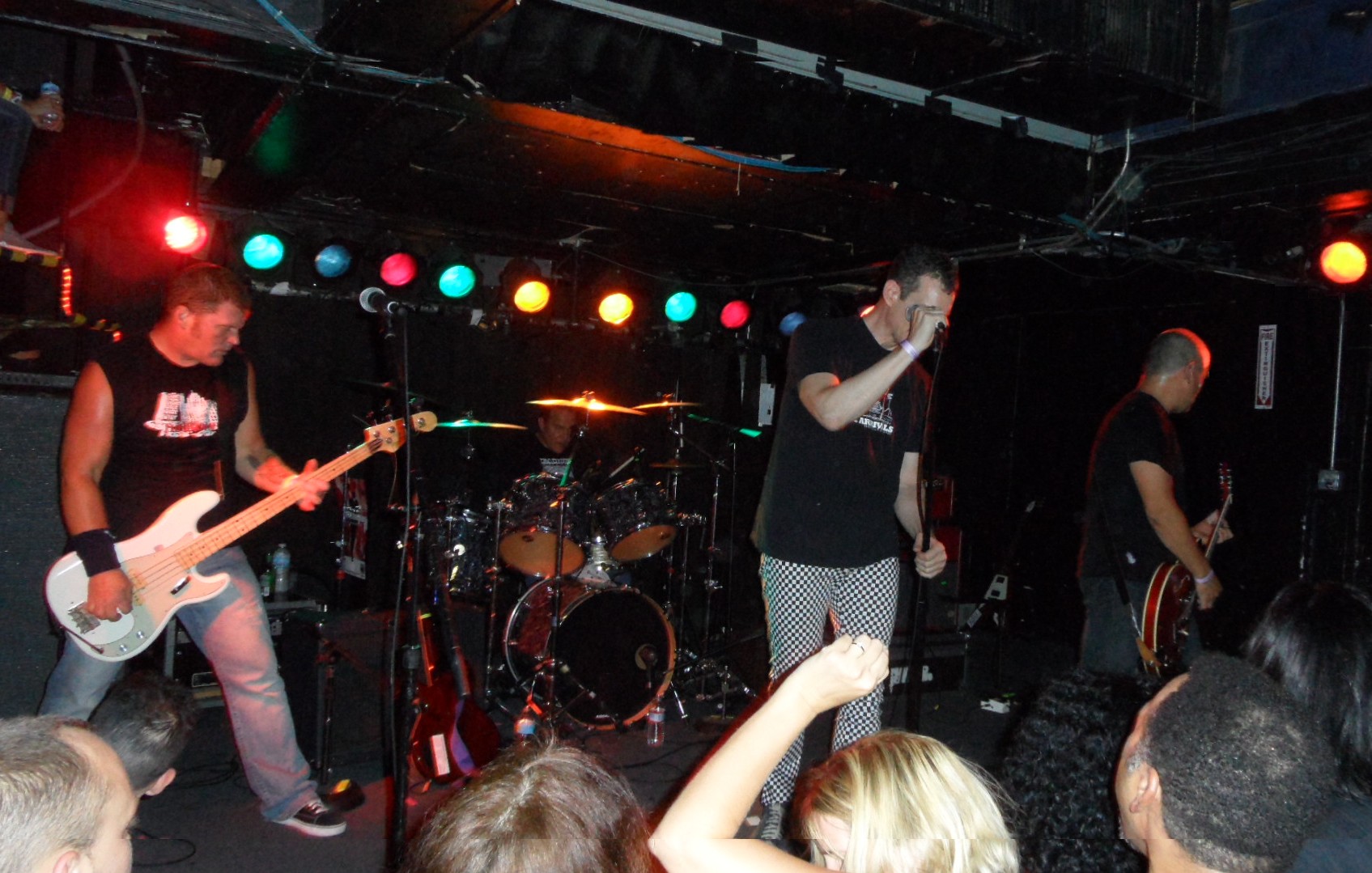|
List Of Hardcore Punk Subgenres
This is a list of hardcore punk musical genres. *Bandana thrash *Christian hardcore *Crossover thrash *Crunkcore *Crust punk *D-beat *Deathcore *Digital hardcore *Easycore *Emo *Electronicore *Grindcore *Heavy hardcore *Jazzcore *Krishnacore *Mathcore *Melodic hardcore *Melodic metalcore *Metalcore *Nardcore *New York hardcore *Nintendocore *Nu metalcore *Positive hardcore *Post-hardcore *Powerviolence *Progressive metalcore *Queercore *Rapcore * Sass *Screamo *Skacore *Thrashcore *Washington, D.C. hardcore See also *Punk rock subgenres * Punk rock *Punk subculture *List of microgenres References Genres Genre () is any form or type of communication in any mode (written, spoken, digital, artistic, etc.) with socially-agreed-upon conventions developed over time. In popular usage, it normally describes a category of literature, music, or other for ... Lists of music genres Hardcore punk {{music-genre-stub ... [...More Info...] [...Related Items...] OR: [Wikipedia] [Google] [Baidu] |
Hardcore Punk
Hardcore punk (also known as simply hardcore) is a punk rock music genre and subculture that originated in the late 1970s. It is generally faster, harder, and more aggressive than other forms of punk rock. Its roots can be traced to earlier punk scenes in San Francisco and Punk rock in California, Southern California which arose as a reaction against the still predominant History of the hippie movement, hippie cultural climate of the time. It was also inspired by Washington D.C. and New York City, New York punk rock and early proto-punk. Hardcore punk generally disavows commercialism, the established music industry and "anything similar to the characteristics of Rock music, mainstream rock" and often addresses social and political topics with "confrontational, politically-charged lyrics." Hardcore sprouted underground scenes across the United States in the early 1980s, particularly in Los Angeles, San Francisco, Washington, D.C. hardcore, Washington, D.C., Boston, and New York h ... [...More Info...] [...Related Items...] OR: [Wikipedia] [Google] [Baidu] |
Melodic Metalcore
Melodic metalcore is a fusion genre, incorporating elements of melodic death metal and metalcore; it has a heavy emphasis on melodic instrumentation, distorted guitar tones, palm muting, double bass drumming, blast beats, metalcore-stylized breakdowns, aggressive screaming, death growls, and clean singing. The genre has seen commercial success for employing a more accessible sound at times compared to other forms of extreme music. Many notable melodic metalcore bands have been influenced by At the Gates and In Flames. History Origins Melodic metalcore began to take form in the late 1990s and early 2000s, tracing its roots to Swedish melodic death metal groups such as At the Gates and In Flames. The stylistic origins of melodic metalcore and traditional metalcore differ greatly. Traditional metalcore evolved out of the hardcore punk scene in the late 1980s, when hardcore bands began to experiment with metal elements such as thrash metal guitar riffs and vocals. In contrast, melo ... [...More Info...] [...Related Items...] OR: [Wikipedia] [Google] [Baidu] |
Skacore
Ska punk (also spelled ska-punk) is a fusion genre that mixes ska music and punk rock music together. (sometimes spelled skacore) is a subgenre of ska punk that mixes ska with hardcore punk. Early ska punk mixed both 2 tone and ska with hardcore punk. Ska punk tends to feature brass instruments, especially horns such as trumpets, trombones and woodwind instruments like saxophones, making the genre distinct from other forms of punk rock. It is closely tied to third wave ska which reached its zenith in the mid-1990s. Before ska punk began, many ska bands and punk rock bands performed on the same bills together and performed to the same audiences. Some music groups from the late 1970s and early 1980s, such as the Clash, the Deadbeats, the Specials, the Beat, and Madness fused characteristics of punk rock and ska, but many of these were either punk bands playing an occasional ska-flavored song, or are usually considered 2-tone ska bands who played faster songs with a punk attitu ... [...More Info...] [...Related Items...] OR: [Wikipedia] [Google] [Baidu] |
Screamo
Screamo (also referred to as skramz) is an aggressive subgenre of emo that emerged in the early 1990s and emphasizes "willfully experimental dissonance and dynamics".Jason Heller, "Feast of Reason". ''Denver Westword'', June 20, 2002Access date: June 15, 2008 San Diego-based bands Heroin and Antioch Arrow pioneered the genre in the early 1990s, and it was developed in the late 1990s mainly by bands from the East Coast of the United States such as Orchid, Funeral Diner, Saetia, Pg. 99, and I Hate Myself. Screamo is strongly influenced by hardcore punk and characterized by the use of screamed vocals. Lyrical themes usually include emotional pain, death, romance, and human rights. The term "screamo" has frequently been mistaken as referring to any music with screaming vocals. Screamo experienced popularity in the 2000s with the success of bands like Alesana, Thursday, Underoath, Silverstein, Hawthorne Heights, Alexisonfire, and Senses Fail. The genre's popularity declined in the ... [...More Info...] [...Related Items...] OR: [Wikipedia] [Google] [Baidu] |
Rapcore
Rap rock is a fusion genre that fuses vocal and instrumental elements of hip hop with various forms of rock. Rap rock's most popular subgenres include rap metal and rapcore, which include heavy metal and hardcore punk-oriented influences, respectively. Characteristics AllMusic describes rap metal as having "big, lurching beats and heavy, heavy riffs" that "occasionally ... oundas if the riffs were merely overdubbed over scratching and beat box beats", and described rap rock as having a more organic sound, characterizing many songs in the genre as rock songs in which the vocals were rapped rather than sung. AllMusic also states that the rhythms of rap rock are rooted in those of hip hop, with more funk influences than normal hard rock. Hed PE, which fuses punk rock with hip hop, occasionally incorporates reggae and heavy metal influences. According to ''Rolling Stone'' writer Rob Kemp, Incubus' 1997 album '' S.C.I.E.N.C.E.'' "links funk metal to the rap metal". Kottonmout ... [...More Info...] [...Related Items...] OR: [Wikipedia] [Google] [Baidu] |
Queercore
Queercore (or homocore) is a cultural/social movement that began in the mid-1980s as an offshoot of the punk subculture and a music genre that comes from punk rock. It is distinguished by its discontent with society in general, and specifically society's disapproval of the LGBT community. Queercore expresses itself in a DIY style through magazines, music, writing and film. As a music genre, it may be distinguished by lyrics exploring themes of prejudice and dealing with issues such as sexual identity, gender identity and the rights of the individual; more generally, queercore bands offer a critique of society endemic to their position within it, sometimes in a light-hearted way, sometimes seriously. Musically, many queercore bands originated in the punk scene but the industrial music culture has been influential as well. Queercore groups encompass many genres such as hardcore punk, electropunk, indie rock, power pop, no wave, noise, experimental, industrial and others. Hist ... [...More Info...] [...Related Items...] OR: [Wikipedia] [Google] [Baidu] |
Progressive Metalcore
Progressive metalcore (also called technical metalcore or ambient metalcore) is a fusion of progressive metal and metalcore characterized by highly technical lead guitar, " atmospheric" elements, and complex instrumentation. Some notable practitioners take influence from djent. History Progressive metalcore evolved from progressive metal and metalcore in the 90s. After the Burial is a pioneer of the genre, forming in 2004 and promoting "a sound that pushed the boundaries of heaviness through the use of extended-scale guitar work." According to the digital ticketing corporation AXS, "After The Burial play progressive metalcore and have been a key contributor to the sound of djent." Erra has been referred to as "the spearhead of the whole modern/progressive metalcore movement" and noted for their "balance between involved riffs, beautiful clean moments and tasty solos." They were formed in 2009 and express their unique version of "progressive technical metalcore" by utilizing "p ... [...More Info...] [...Related Items...] OR: [Wikipedia] [Google] [Baidu] |
Powerviolence
Powerviolence (sometimes written as power violence) is an extremely dissonant and fast subgenre of hardcore punk which is closely related to thrashcore and grindcore. In contrast with grindcore, which is a "crossover" idiom containing musical aspects of heavy metal, powerviolence is just an augmentation of the most challenging qualities of hardcore punk. Like its predecessors, it is usually socio-politically charged and iconoclastic. History Siege are considered the pioneers of powerviolence. Additionally, Infest have received credit for having an early impact on the genre. The microgenre solidified into its commonly recognized form in the early 1990s. This is best exemplified by bands such as Man Is the Bastard, Crossed Out, Neanderthal, No Comment and Capitalist Casualties. Powerviolence groups took inspiration from Siege, Hüsker Dü, SSD, Deep Wound, Neon Christ, Hirax, Impact Unit, Dirty Rotten Imbeciles, Negative FX and Corrosion of Conformity. Spazz vocalist and bas ... [...More Info...] [...Related Items...] OR: [Wikipedia] [Google] [Baidu] |
Post-hardcore
Post-hardcore is a punk rock music genre that maintains the aggression and intensity of hardcore punk but emphasizes a greater degree of creative expression. It was initially inspired by post-punk and noise rock. Like post-punk, the term has been applied to a broad constellation of groups. Post-hardcore began in the 1980s with bands like Hüsker Dü and Minutemen (band), Minutemen. The genre expanded in the 1980s and 1990s with releases by bands from cities that had established hardcore scenes, such as Fugazi from Washington, D.C. as well as groups such as Big Black and Jawbox that stuck closer to post-hardcore's noise rock roots. In the early- and mid-2000s, achieved mainstream success with the popularity of bands like My Chemical Romance, Dance Gavin Dance, AFI (band), AFI, Underoath, Hawthorne Heights, Silverstein (band), Silverstein, The Used, At the Drive-In, Saosin, Alexisonfire, and Senses Fail. In the 2010s, bands like Sleeping with Sirens and Pierce the Veil achieved main ... [...More Info...] [...Related Items...] OR: [Wikipedia] [Google] [Baidu] |
Positive Hardcore
Positive hardcore (sometimes shortened to posicore or posi-core) is a branch of the hardcore punk music scene, that is socially aware, or focuses on values, such as being inclusive, community-oriented, and anti-violent. The genre was created as a backlash to the violence and negativity in the straight edge Straight edge (sometimes abbreviated sXe or signified by XXX or X) is a subculture of hardcore punk whose adherents refrain from using alcohol, tobacco, and other recreational drugs, in reaction to the excesses of punk subculture. For some, thi ... scene. History Since the term was coined in the 1980s, it has been applied to a divergent group of musical styles and bands including 7 Seconds (band), 7 Seconds,Ensminger, 2011, p. 162 Youth of Today, Good Clean Fun (band), Good Clean Fun, and The Wonder Years (band), The Wonder Years. Early positive hardcore bands in the 1980s and 1990s sang about social issues such as the treatment of the LGBT community by the hardcore punk s ... [...More Info...] [...Related Items...] OR: [Wikipedia] [Google] [Baidu] |
Nu Metalcore
Metalcore (also known as metallic hardcore) is a fusion music genre that combines elements of extreme metal and hardcore punk. As with other styles blending metal and hardcore, such as crust punk and grindcore, metalcore is noted for its use of breakdowns, slow, intense passages conducive to moshing. Other defining instrumental qualities include heavy riffs and stop-start rhythm guitar playing, occasional blast beats, and double bass drumming. Vocalists in the genre typically use thrash or scream vocals. Some later metalcore bands combine this with clean singing, often during the chorus. Death growls and gang vocals are common. 1990s metalcore bands were inspired by hardcore while later metalcore bands were inspired by melodic death metal bands like At the Gates and In Flames. The roots of metalcore are in the 1980s when bands would combine hardcore punk with heavy metal. This included New York hardcore bands like Agnostic Front, Cro-Mags, and Killing Time, British hardcore pun ... [...More Info...] [...Related Items...] OR: [Wikipedia] [Google] [Baidu] |
Nintendocore
Nintendocore is a broadly defined style of music that most commonly fuses chiptune and video game music with hardcore punk and/or heavy metal. The genre is sometimes considered a direct subgenre of post-hardcore and a fusion genre between metalcore and chiptune. The genre originated in the early 2000s and peaked around the late 2000s with bands like Horse the Band, An Albatross, The NESkimos and Minibosses pioneering the genre. Characteristics Nintendocore frequently features the use of electric guitars, drum kits, and typical rock instrumentation alongside synthesizers, chiptune, 8-bit sounds, and electronically produced beats. It originated primarily from various subgenres of hardcore punk and/or heavy metal, (such as post-hardcore, metalcore, deathcore, cybergrind, and screamo) but artists in the genre have also incorporated elements of electro, noise rock, hardcore techno, ambient, glitch, breakcore, and post-rock, among others. Nintendocore groups vary stylistically ... [...More Info...] [...Related Items...] OR: [Wikipedia] [Google] [Baidu] |








